People want their new vehicles to do many things well nowadays, so in addition to nailing style, practicality and features, buyers are also increasingly demanding efficiency. One of the cars that best fits that bill is the Toyota RAV4 Hybrid. Its hybrid sales increased a whopping 30% last year, but one of its biggest new competitors, the Subaru Forester, is finally adding a hybrid to meet shopper demand. So, with many similarities and differences, who wins in a 2025 Subaru Forester Hybrid vs. 2025 Toyota RAV4 Hybrid? Let’s go ahead and find out!
Pricing and Equipment
So, first off, let’s discuss pricing for these two SUVs.
Starting with the popular RAV4, we have the sporty-yet-high-end XSE trim level. Toyota offers quite a few options, and our tester checked almost all of those, making its total price a hair over $43,000, after destination.
RAV4 (Hybrid XSE AWD): $37,960 | Options: +$3,665 | Destination: $1,395 | Total: $43,020
Moving to the all-new Subie, you’ll find a very similar price point in the Touring Hybrid trim level. After destination, its grand total is around $500 more than the RAV4 at $43,610.
Forester (Hybrid Touring AWD): $41,695 | Options: +$495 | Destination: $1,420 | Total: $43,610
Exterior Design
Starting with the exteriors, you’ll see that both crossovers are mild in overall design but with some spicier elements to add some pizzazz. They have gloss black finishes to the grilles themselves, and even though they are hybrids, you wouldn’t know from their exteriors which mirror their gas counterparts almost identically.
Regardless, for lighting, we have some differences. Both come with premium projector LED lighting, but only the Subaru also has adaptive abilities for cornering.
Additionally, it has LED fog lamps compared to the RAV4’s small accent lighting strip.
Continuing to the sides, the Forester gains about an inch of length for the all-new generation, which makes it a couple inches longer than the RAV4. We’ll talk about how that translates to interior space later, but for design, know that they both include two-tone roof options, as you can see on our testers.
Length: 180.9-inches (RAV4) | 183.3-inches (Forester)
For wheels, you’ll find large contrast 19-inch alloy wheels on the Forester compared to the Toyota which maxes out at 18-inches for the Hybrid models.
Moving on to the back, you may have your own opinion regarding their looks, but as far as features, you’ll find partially LED taillights, exposed exhaust outlets and window wipers. The only difference is that the Forester includes LED reverse lights.
If you’re looking to tow, neither are great, but the Hybrid RAV4 can move about 15% more weight at 1,750 lbs. vs. the Forester’s 1,500 lbs.
Towing: 1,750 lbs. (RAV4 Hyb) | 1,500 lbs. (Forester Hyb)
Additional Features
Now moving on to some individual features, you’ll find nice mirrors on both. They have BSM, heating, and LED turn signals.
But family SUVs need to be safe, and one of the really nice things about these two is that all four of your major active safety features are included standard. Their warranties are also mostly the same as well, besides for the Toyota having 2 years/25k miles of complimentary maintenance.
But Subaru adds even more tech on the inside for the Forester Hybrid, so let’s get into that comparison.
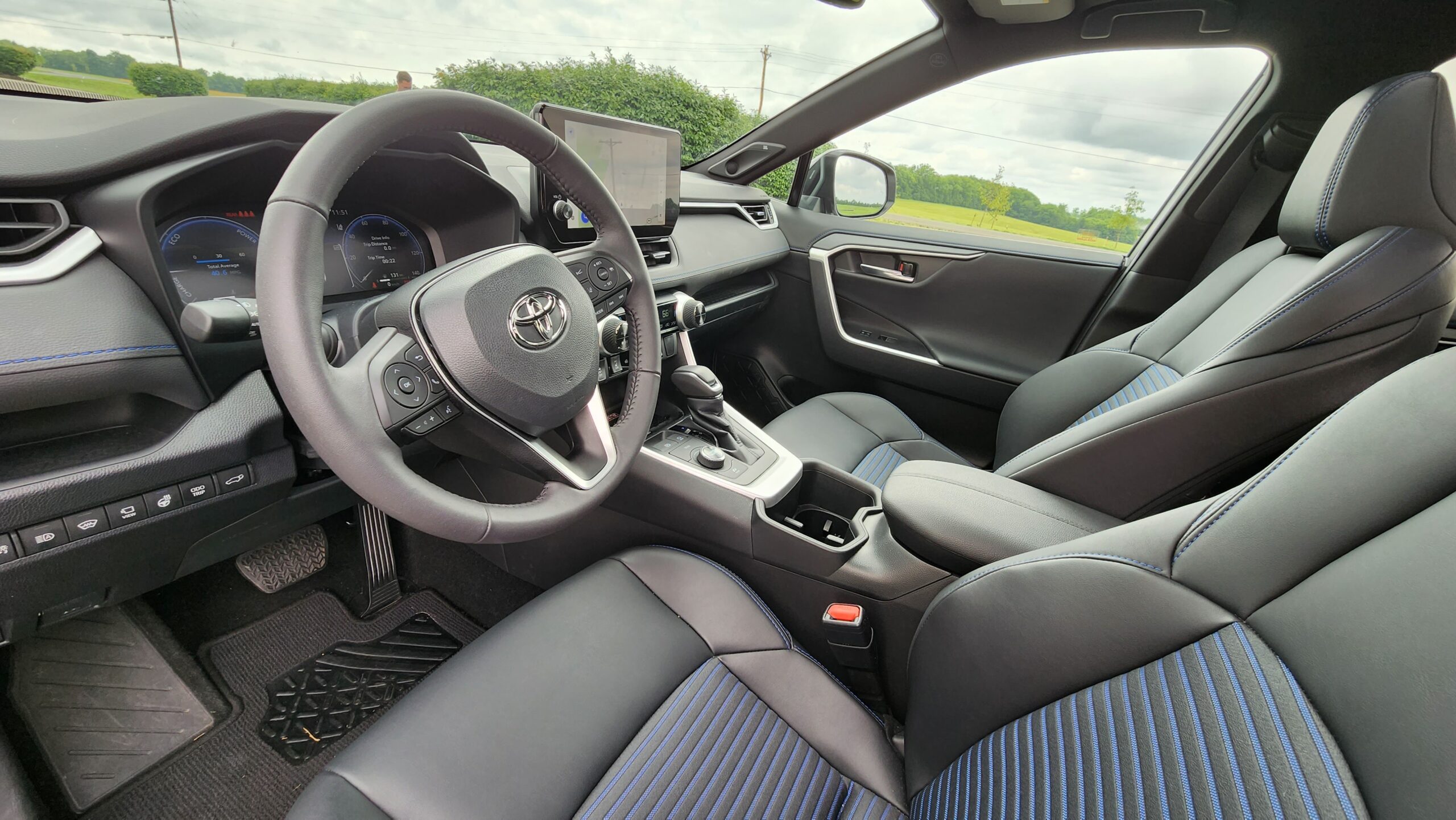
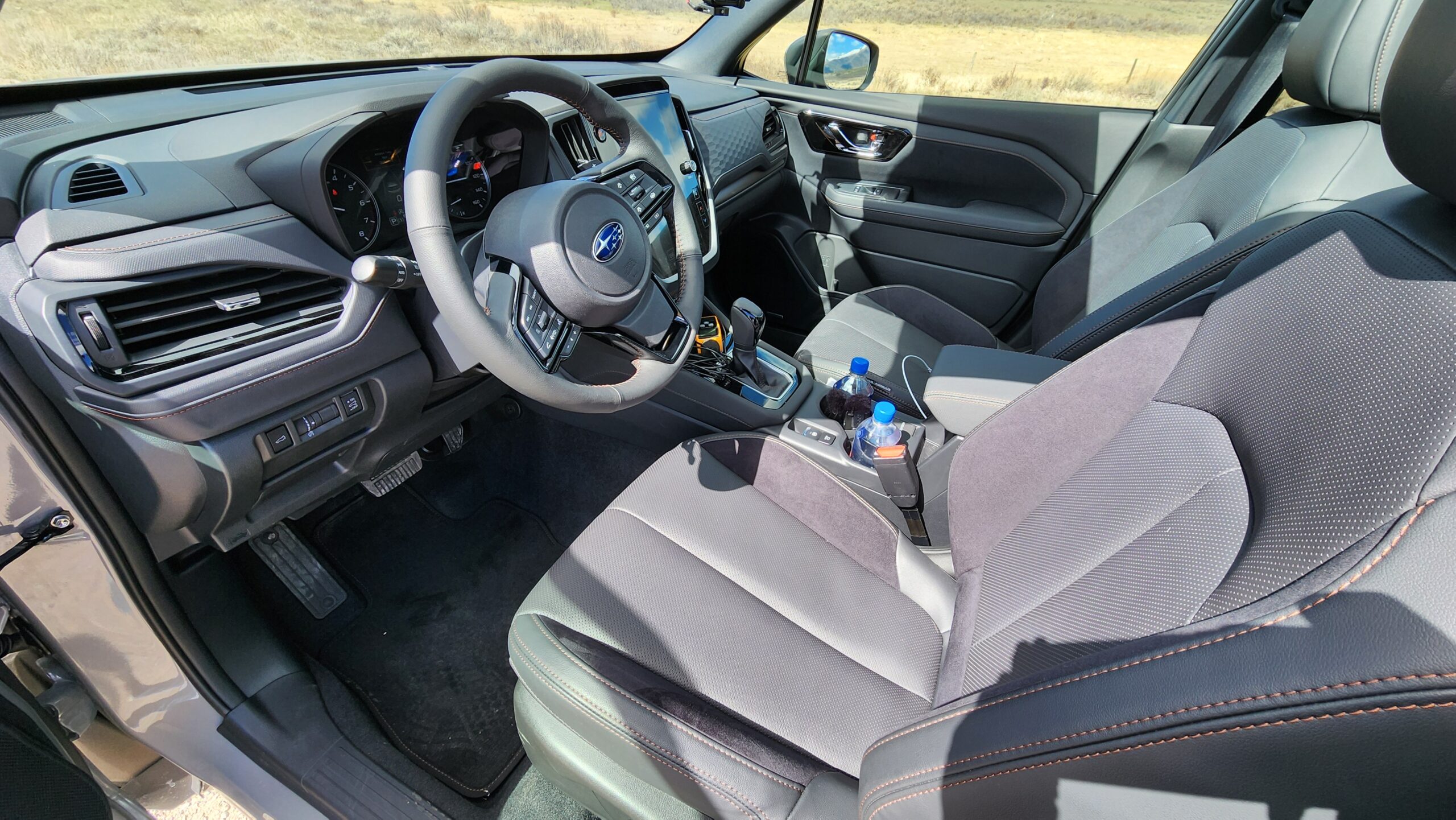
Interior Design
Approaching both SUVs, they have smart entry systems with nicely done key fobs. Remote start is free via each brand’s app during the trial period.
They have sensors behind the door handles to unlock, and after opening the doors, you’re going to see spacious, and nicely appointed cabins in their high trim levels.
Before we dig into the features, let’s start with the seats. The Toyota has a sporty black SofTex leatherette, while the Forester goes for a more premium real leather with Alcantara suede accents on the side. The Subaru also has slightly more adjustability from the seat.
Furthermore, the Subie has the advantage with seat climate, as it includes seat ventilation. That’s something that only the more expensive Limited RAV4 can get, and both SUVs have 2-person memory seats.
Now once inside the cabins, let’s check out the major point category of material quality. In this regard, both models have solid cabins. The Subaru has a durable feeling leatherette across the dash and where your knees rest. The Toyota has very similar materials with soft plastics and leatherettes, so we’ll call this area a draw.
After startup, you’ll see that big hybrid-specific change on the Forester. Despite just getting redesigned, the gas models still have a small 4.2-inch gauge cluster setup, but thankfully the new Hybrid instead adds a 12.3-inch full digital gauge cluster. That can display things like Apple Maps and now matches the 12.3-inch digital cluster on the RAV4.
Neither have the option of a head-up display, and moving back, they both have heated, leather-wrapped steering wheels, along with rain-sensing wipers as equipped.
Storage and Technology
Now it’s time to evaluate another major interior section: storage. This is a big deal for many families, and in this regard, the RAV4 pulls away with the lead. It has a larger center console, larger storage area in front of the shifter, and a passenger storage shelf. The Subaru isn’t bad per se, but the Toyota takes the point here with its super functional front cabin.
Moving on, both have wireless phone chargers, and surprisingly, keep traditional shifters. They have easy operation, and when in reverse, you’ll see a 360-degree camera on both.
For climate, they have dual-zone automatic setups with physical buttons for the main temperature adjustment. And for audio, both have their respective upgraded audio systems. That means the Toyota has a JBL and the Subaru a Harman Kardon system. Let’s take a listen.
While both have the same speaker count, it’s the Subaru that has fuller audio quality and richer sound.
Forester: 11-speakers Harmon Kardon
RAV4: 11-speaker 800-watt JBL Premium audio
People want a high level of technology in cars nowadays, so let’s move to the key element of displays. The RAV4 got a big upgrade to this 10.5-inch display a few years back, but not to be outdone, the all-new Forester adopts the large 11.7-inch display from other Subaru products this year. That means it has about 10% more screen real estate, and as far as functionality, both have integrated navigation systems and wireless Apple CarPlay and Android Auto. Performance-wise, Toyota’s software runs smoother and is less prone to hiccups.
As we wrap up the front of the cabins, both have auto-dimming mirrors with HomeLink remotes, and the rear camera functionality if you flip the switch. Both additionally have panoramic moonroofs.
LOOKING TO BUY One OF THEse VEHICLES?
A smart next step would be to check our Car Quote Tool. This tool will connect you with local dealerships in your area to get you the BEST price, access to INVOICE PRICING information, and a monthly payment calculator. Get dealerships to compete for your business!
Rear Seats and Cargo
But now that we’re done with the fronts, how are the back seats? Well, to start, both have impressive amounts of space. The Forester comes in about 4% larger in terms of rear legroom, but that’s not quite at the 5% required to score a point. Headroom is nearly identical for both.
Forester: Legroom: 39.4 inches | Headroom: 39.6 inches
RAV4: 37.8 inches of legroom | 39.5-inches of headroom
Now that that’s out of the way, they also have quite a few features. Both give you USB ports and rear vents, [p] but only the Forester Touring has heated rear seats. That’s something once again only optional on the more expensive RAV4 Limited.
Now let’s see how much stuff you can bring along with you for the journey. Both have power tailgates with hands-free ability, and once they open, you’ll find a large 31% advantage in the RAV4 behind the 2nd row of seats. Surprisingly, that advantage dissipates with the seats folded since you’ll get a nearly identical maximum capacity.
RAV4: Behind 2nd row: 37.6 cubic feet | Max: 69.8 cu.ft
Forester: Behind 2nd row: 27.5 cu. ft | Maximum: 69.1 cu. ft (w/ pano)
Packaging is challenging when it comes to hybrid systems, and due to their different approaches, only the RAV4 can still include a spare tire. However, Forester includes switches to easily fold the 60/40 split folding seats from the cargo area.
This has certainly been a tight race so far, but now it’s time to take this fight out to the street!
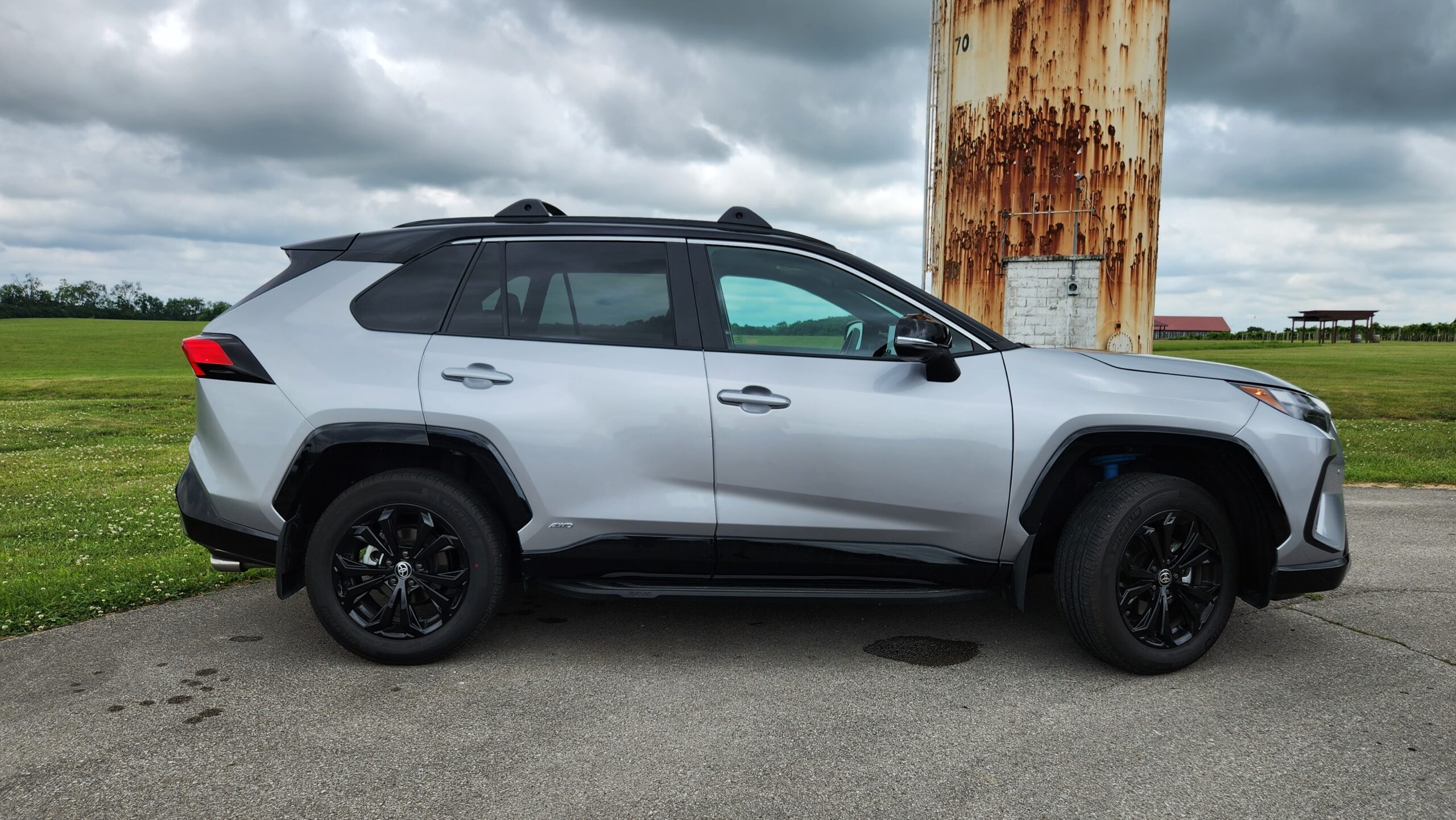
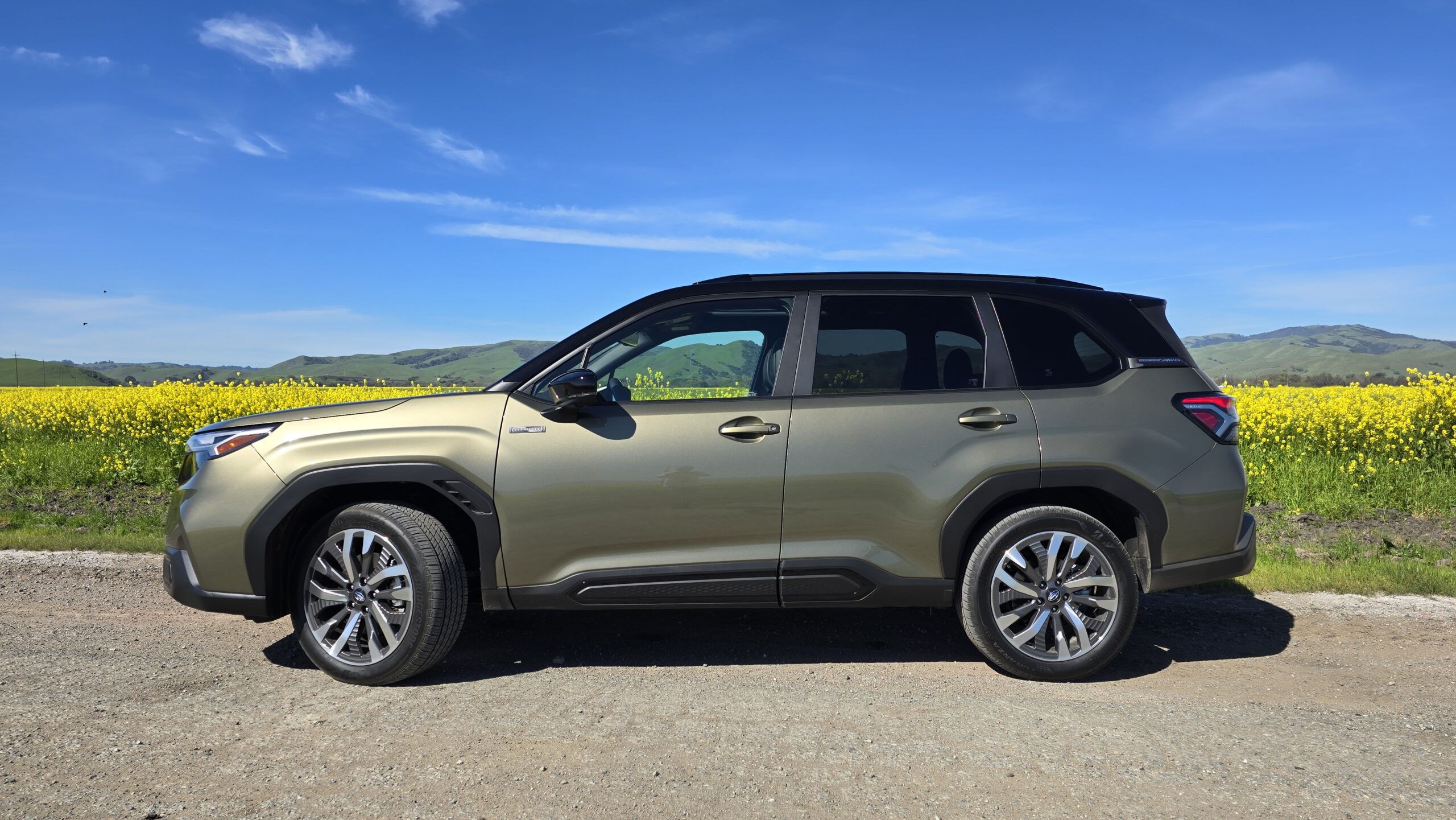
Powertrains
But now it’s time for the interesting part of this comparison: what’s under the hoods. Previously, RAV4 was one of the only hybrid options in the segment, but many brands are adding hybrid options now, including this Forester. Subaru collaborated with Toyota and uses some of the very same electric componentry from the RAV4’s hybrid.
However, the overall designs of hybrid systems work quite differently, and Subaru is using its own 2.5L Boxer-4 engine. With 2 electric motors, the Forester makes 194 HP. Toyota’s hybrid system is stronger, making 219 hp, a 12% power advantage that can be felt out on the road.
RAV4 Hybrid: 2.5L I-4 + Elec: 219 hp
Forester Hybrid: 2.5L Boxer-4 + Elec: 194 hp
When it comes to transmissions, both use eCVTs and have standard all-wheel-drive systems. Their AWD systems are very different from an engineering perspective. The Forester, with its more off-road and rugged nature, was designed to keep their famous Symmetrical AWD system. This is a mechanical full-time AWD system, compared to the RAV4, which essentially operates as a FWD vehicle most of the time but will kick in the rear electric motor to make AWD when needed. That, paired with the Forester’s greater ground clearance, means it is significantly more capable when going off the beaten path.
Test Drive and Fuel Economy
Now let’s talk about the ride quality. In this area, both impress and have better-than-average ride quality and comfortable seats. Simply put, they will certainly be great companions on long road trips.
But that aside, how quiet are the cabins? Here at Car Confections, we take a sound level reading of every vehicle we test on our channel. Unfortunately, the Subaru’s was taken on a press event in California so it can’t be scored officially, but even then, the two SUVs came in within 1 dB of one another and are quiet for the segment.
RAV4: 56.7 dB @ 55 MPH
Forester: 55.9 dB @ 55 MPH
Lastly, let’s talk fuel economy. Of course, that’s one of the biggest items of importance in this comparison and the RAV4 still is the class leader despite its new competition. While the Forester’s hybrid system certainly improves efficiency over the gas model, it’s still not able to overcome the RAV4’s phenomenal 40 MPG combined rating and is about 5 MPG behind overall.
RAV4 Hybrid: 41/38/40 MPG
Forester Hybrid: 35/34/35 MPG
Reliability, Resale, and Value
In our reviews and comparisons, we are also adding in reliability and resale information to give you a better picture of the overall value beyond just the original MSRP.
Beginning with reliability, we developed the Combined Reliability Index, which considers several studies from trustworthy sources, and combines them in a way that gives a more realistic picture. Subaru ranks 11 slots above the industry average for all brands in reliability, while Toyota is the very top brand for reliability, 15 slots above average.
We also put Mason’s economics degree to work to develop a detailed Predicted Resale Value tool. After 5 years and 60,000 miles, both brands impress. Toyota has the 2nd highest predicted resale value of 64.5% and Subaru the third best at 63%.
Resale is obviously important because it determines how much money you get back, but we can’t forget about the price difference at the original purchase. The Forester costs $590 more than the RAV4.
I want to emphasize that if money, reliability or resale value matter less to you personally, feel free to disregard these points. And if you’d like to check out all our data about reliability and resale values, as well as learn about our methodology, make sure to head to www.carconfections.com/resale and www.carconfections.com/reliability. Buying a car is a big decision, and this is a great place to compare all the makes you might be cross-shopping.
2025 Subaru Forester Hybrid vs. 2025 Toyota RAV4 Hybrid Winner!
So there you have it; the objective winner is the RAV4, but let’s discuss who should be “your” winner…
Forester:
- Enhanced off-road capability (symmetrical AWD with Hybrid)
- More features as tested (vented seats, heated back seats)
- Audio system & larger screen
RAV4:
- Hybrid powertrain (more powerful and better fuel economy)
- Spare tire
- Storage in front of cabin
Now we want to know your opinions, so make sure to head to the comment section and let us know which one you would pick!
Thanks for joining us for another Car Confections Comparison! We’ll catch you next time as we sample the latest automotive delicacies!

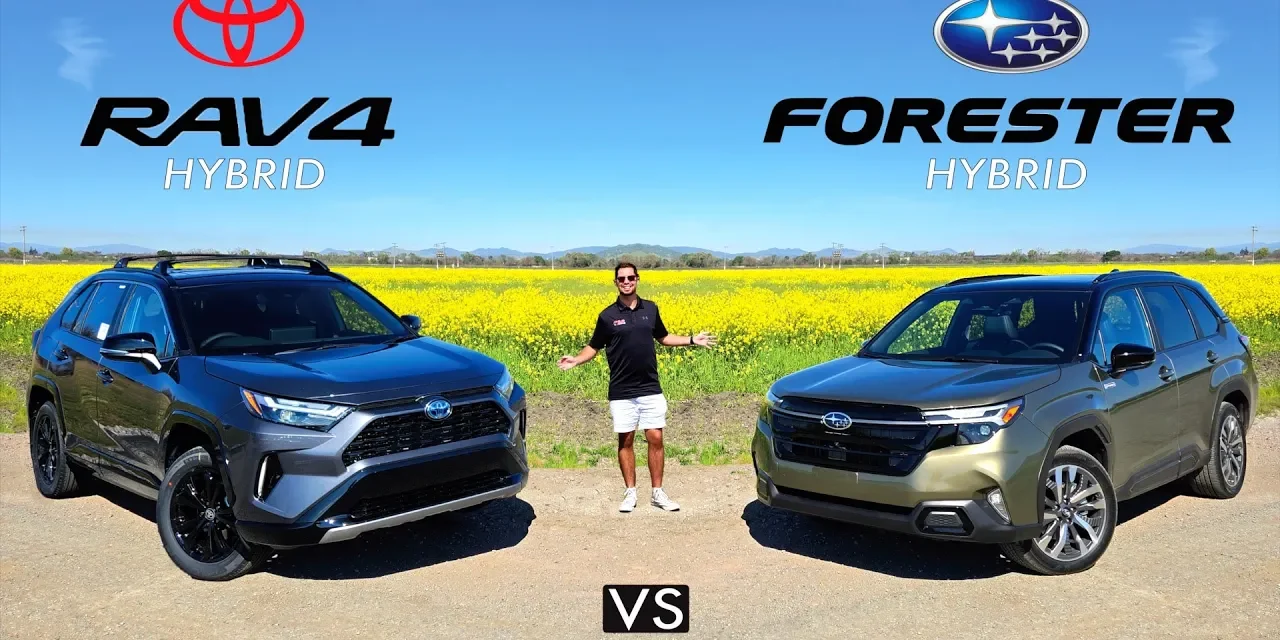
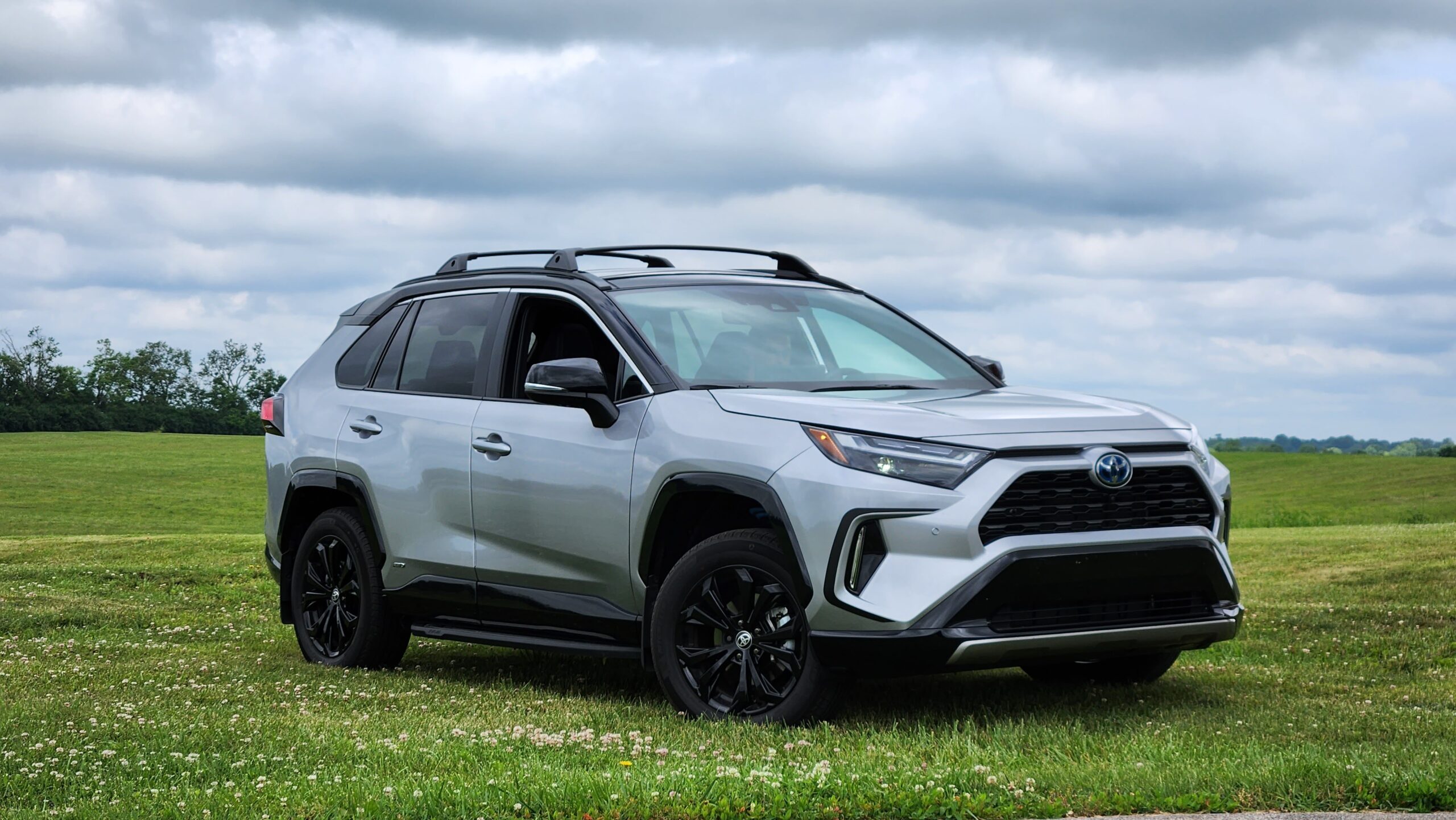
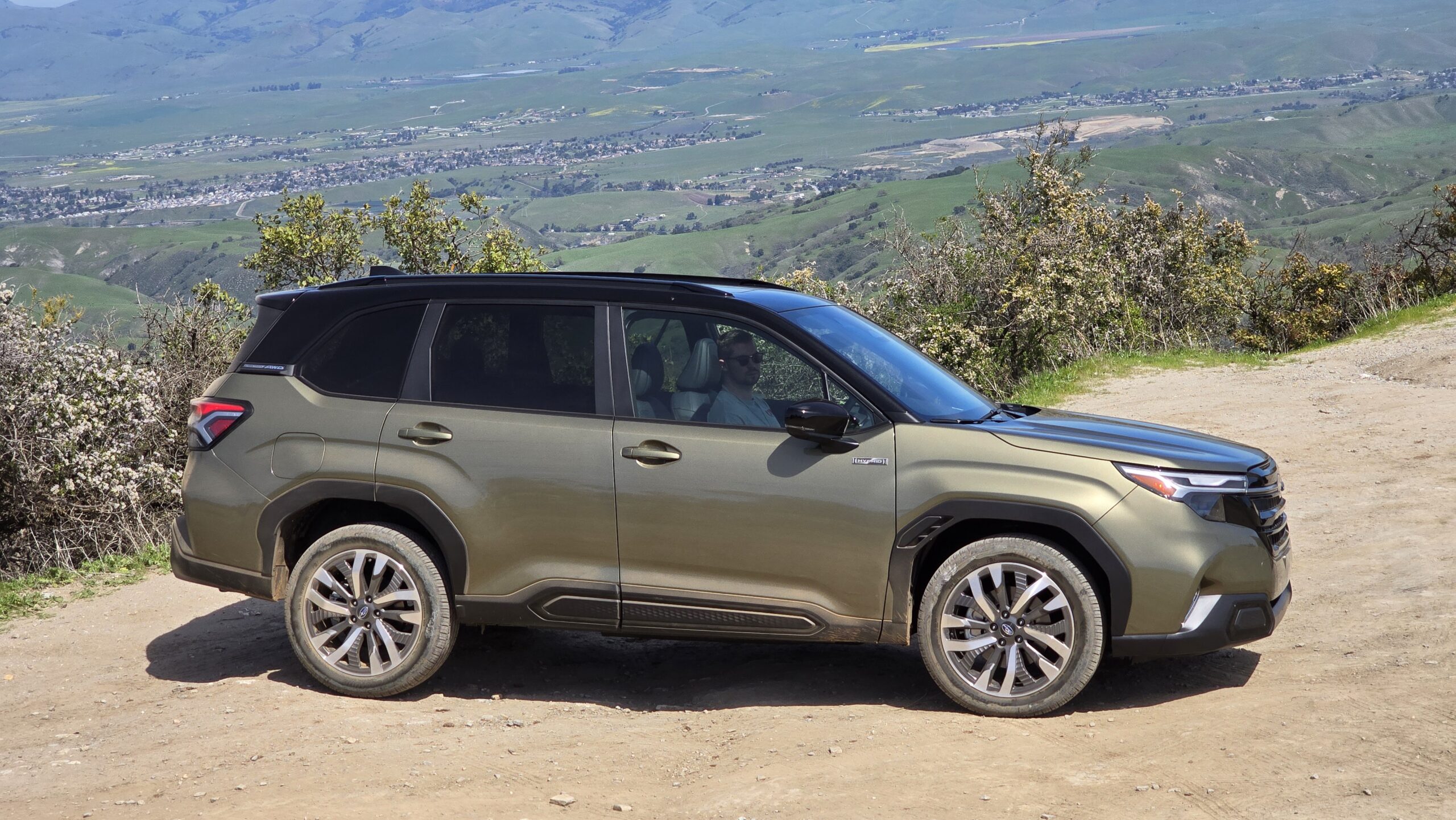
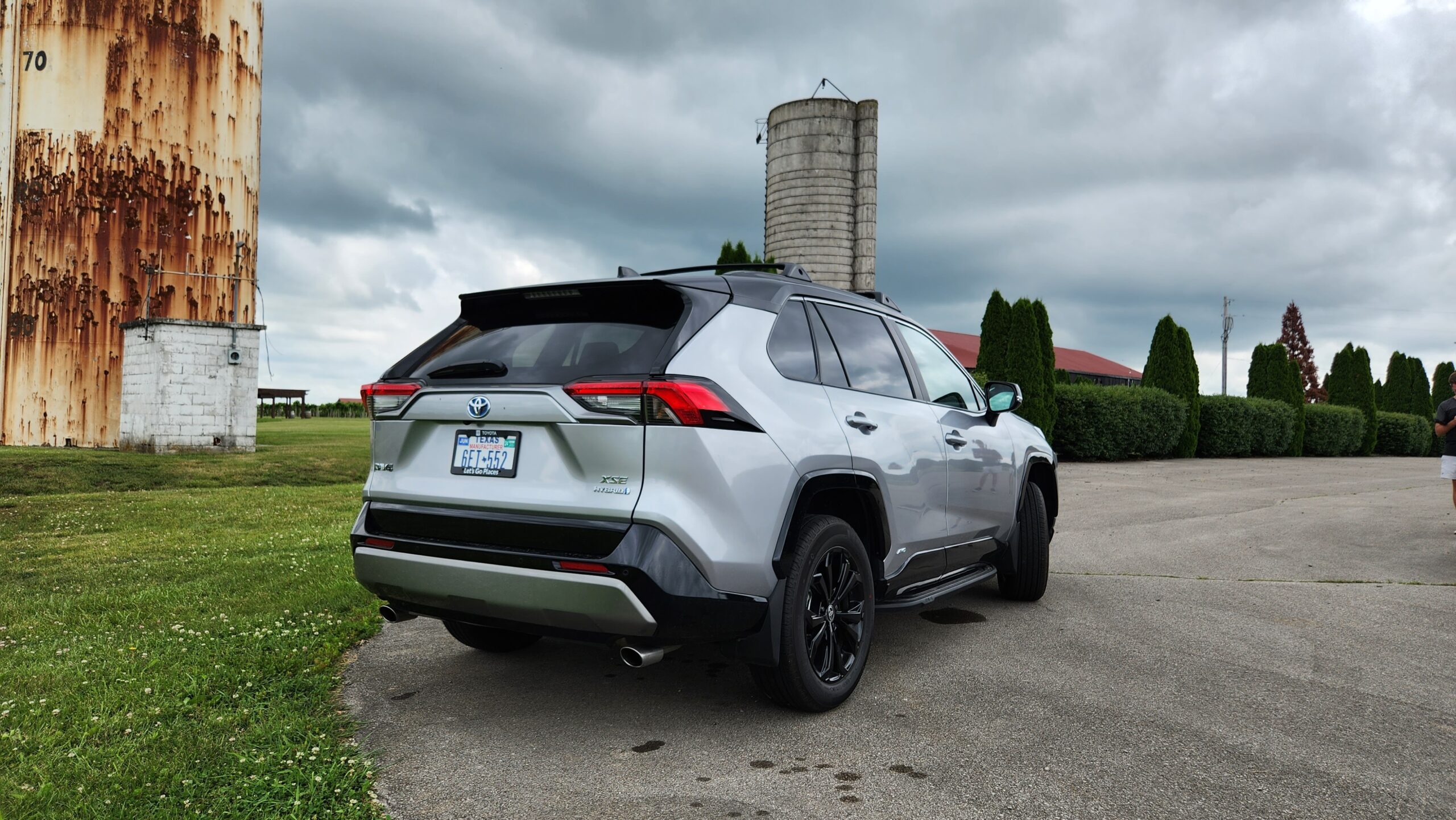

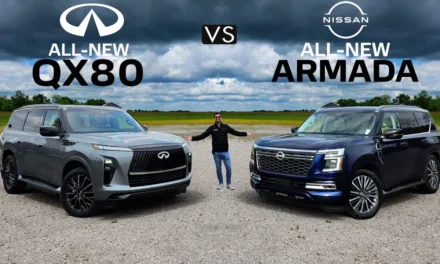
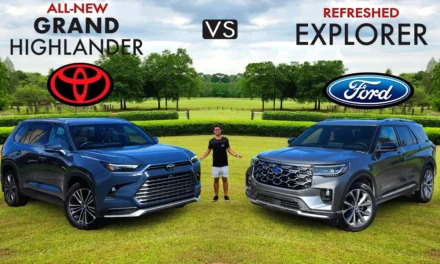
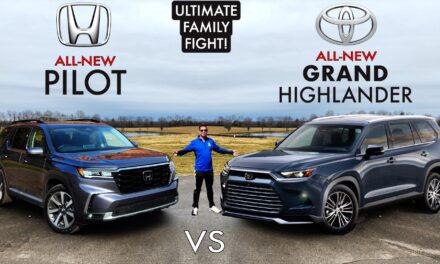
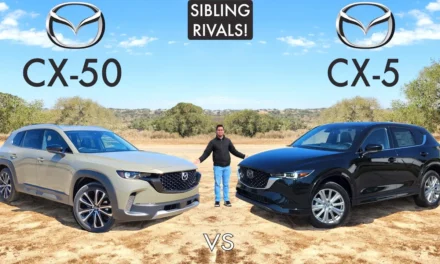



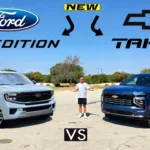


Recent Comments